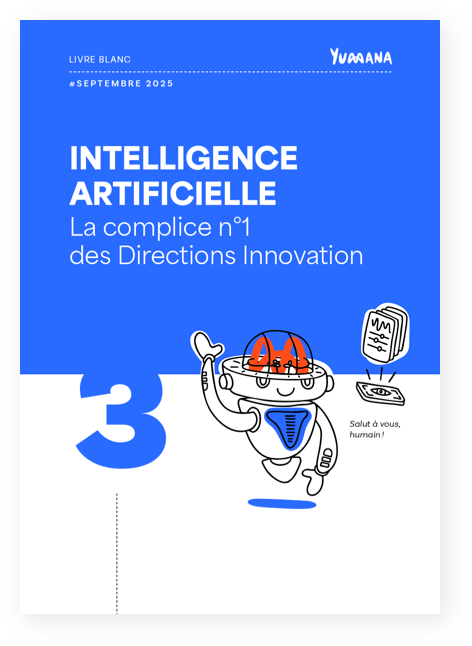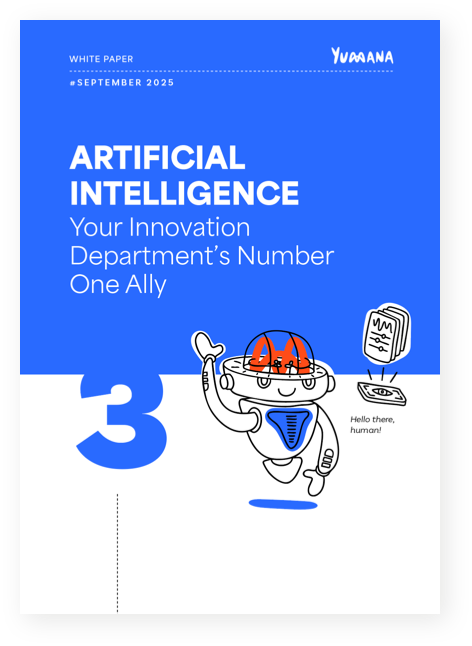Co-creation is a fast-growing strategy whereby companies involve various stakeholders, including customers or employees, in order to collaborate on innovation.
This guide explores the concept of co-creation, and gives you the keys to implementing it effectively.

What is co-creation?
Defined in the early 2000s by Prahalad and Ramaswamy (2004), co-creation is an approach that invites customers, employees, suppliers or any other stakeholder external to the organisation to participate in the company’s innovation activities.
One of the advantages of co-creation is its flexibility, which means that it can be used at different stages of the product design process, such as :
- Ideation: the company can ask stakeholders to contribute their ideas, or to enrich the ideas proposed;
- Design;
- Product development;
- Product/service testing.
In S-DL (service-dominant logic), co-creation means moving from a product-centric to a service-centrich approach. Value is created together through interaction, rather than being present solely in the product. To achieve this, companies and stakeholders focus on regular exchanges and shared benefits.
While co-creation has traditionally focused on engaging external customers – based on their needs and preferences – the involvement of internal stakeholders, particularly employees, is increasingly common.
When employees are involved as ‘internal customers’ in co-creation, organisations tap into a valuable source of ideas and innovation. Co-creation allows employees to feel directly involved in business innovation, which creates a sense of belonging and strengthens their bond with the company.
How can co-creation be implemented effectively?
The stages of co-creation in product design
There are generally 3 key stages in the co-creation process.
- Gathering ideas and needs, laying the foundations of the project: this first stage, often called the ideation phase, consists of asking participants to share their ideas or needs for a specific product;
- Iterations and adjustments, or the art of refining concepts together: this second stage often involves iterative design sessions, during which prototypes or concepts are adjusted in response to user feedback;
- Final validation, preparing the product for launch: the product or service is refined on the basis of exhaustive feedback, which may include validation tests where the product is submitted to a group of users to gather feedback before the official launch.
Approaches to co-creation
To obtain useful information and encourage collaboration, a variety of qualitative methods and engagement techniques are used:
- Qualitative methods: surveys, focus groups and workshops play a key role in co-creation, as they allow participants to share their ideas and preferences;
- Engagement techniques: interactive workshops, brainstorming sessions and digital platforms (such as online forums or co-creation portals) are common tools that allow stakeholders to contribute ideas, respond to each other’s comments and create a sense of common purpose.
What is the role of management in co-creation?
For co-creation to be effective, management must support the process in a visible way. This includes valuing and recognizing employees’ contributions, which helps to create a culture of innovation and inclusion.
In addition, it is essential for managers to ensure clear and consistent communication throughout the co-creation process. Regular updates, feedback loops and clear timetables help to maintain momentum and show that participants’ ideas are being heard and taken into account. This transparency stimulates not only motivation, but also trust between stakeholders.
Results and impact of co-creation
Impact on internal customers
Can co-creation really improve the daily lives of employees?
First and foremost, co-creation is often appreciated for its positive effect on employees. By actively participating in these collaborative processes, they are exposed to new tools, methodologies and ideas, enabling them to learn in a practical way. This learning contributes to their professional development and deepens their understanding of the organisation’s objectives.
Co-creation can also be a powerful lever for stimulating intrapreneurship. By enabling employees to express their ideas and turn them into concrete projects, it strengthens their ability to innovate within the company itself. This gives them the opportunity to take an active role in the collective success, while cultivating their creativity and entrepreneurial spirit.
Finally, when employees feel that their ideas and contributions are genuinely valued, their motivation is boosted, leading to greater overall commitment. This process can also encourage other employees to participate and share their own ideas, helping to promote a culture of co-creation within the company.
Positive results for the company
Beyond the individual benefits for employees, co-creation has a positive impact on the organisation as a whole.
Indeed, employees’ satisfaction and positive perception of the organisation often translates into word-of-mouth advocacy. Their favourable opinions help to strengthen the organisation’s reputation, which in turn benefits customer perception and stakeholder relations.
What’s more, by incorporating a variety of ideas and different perspectives into the development process, companies are able to design products and services that truly meet market needs. This collaborative work also encourages more innovative solutions, capable of standing out from the competition, while increasing market share and profitability.
Co-creation can also have a positive impact on business performance, particularly by improving customer satisfaction and loyalty. A product designed in collaboration with customers is more likely to meet their expectations, leading to increased sales and positive recommendations.
Find out more about co-creation:
- “Co‐Creation with Customers: An Evolving Innovation Research Field.” Journal of Product Innovation Management, 2015.
- “Business Development Through Innovation And Co-Creation.” Economy & Business Journal, 2016.
- “Stakeholder engagement in co-creation processes for innovation: A systematic literature review and case study.” Journal of Business Research, 2020.

CTO de Yumana



